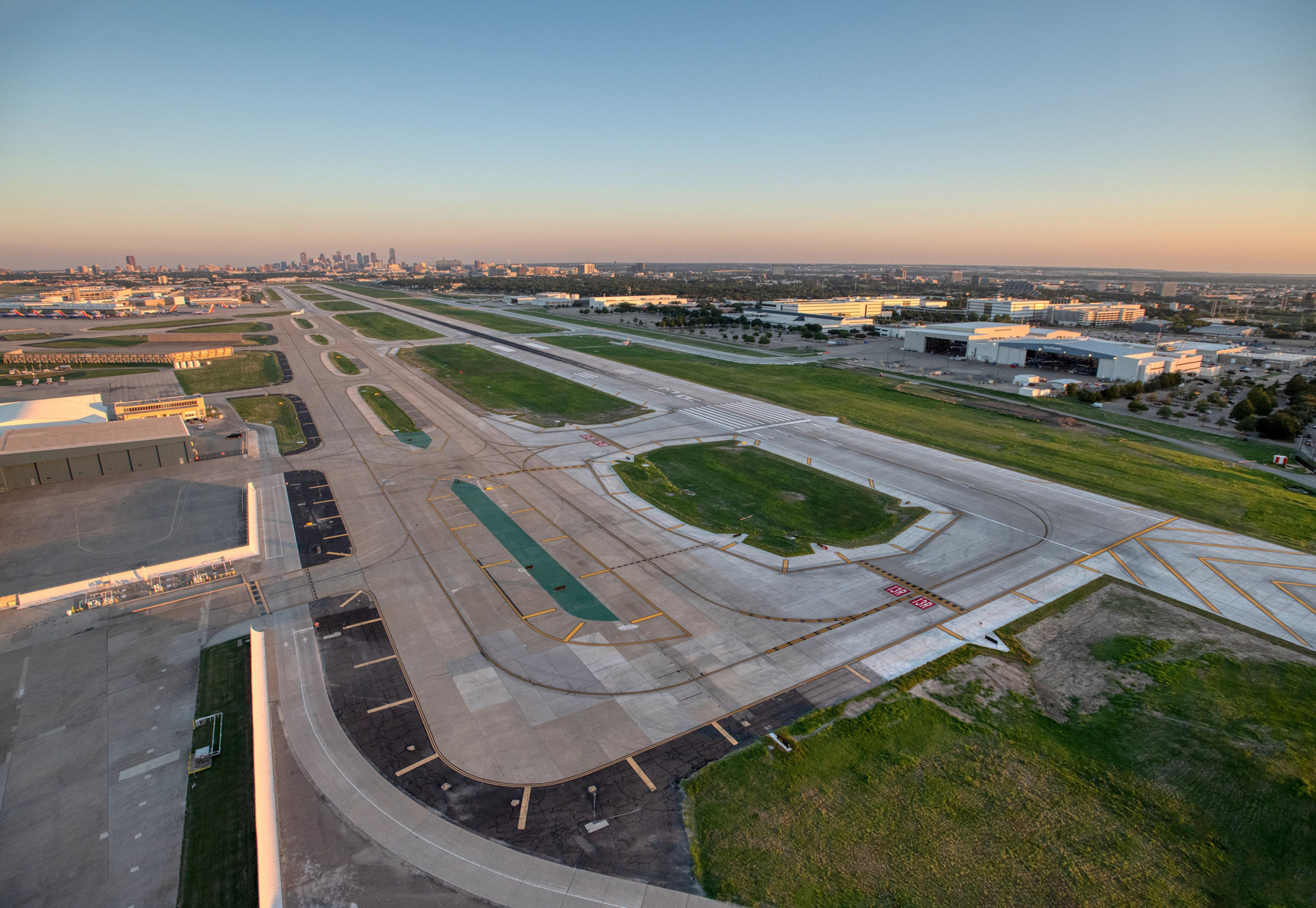
Dallas Love Field’s newly reconstructed Runway 13R-31L increases capacity, efficiency and safety at the nation’s busiest medium-hub airport
DESIGNER
2023
At 8,800 feet long, Runway 13R-31L is Dallas Love Field’s (DAL) main commercial air carrier runway. It is one of the two runways that serve more than 8 million passengers each year at DAL, the nation’s busiest medium-hub airport and the 31st-busiest airport in the country. When the runway’s reconstruction became imperative, DAL took steps to move the project forward while minimizing operational impacts to tenants — particularly Southwest Airlines, for which DAL is the corporate headquarters and primary hub.
Originally constructed in the 1960s, the runway had last been rehabilitated in 1990 using a concrete overlay with a 20-year design life. By 2018, the existing overlay had seen a dramatic increase in air traffic, as well as changes in airport fleet mix and pavement design methodology that indicated the overlay was too thin for Love Field’s aircraft traffic. Evaluations by the City of Dallas Department of Aviation also showed the runway condition needed to be reconstructed.
HNTB served as engineer of record and resident project representative/construction manager and recognized the potential for a holistic approach to the project scope. The firm recommended addressing not only the pavement rehabilitation but also upgrades to drainage, electrical and Federal Aviation Administration infrastructure.
“Because reconstruction required runway closure for a period of time, we had a once-in-a-generation opportunity to develop a comprehensive plan that solved more than just the pavement issue,” said HNTB Project Manager Ryan Shropshire. “Airport leaders embraced the idea that we could make other improvements while the runway was out of service, which would prevent them from having to complete those upgrades separately in a few years.
“The airport already had completed a master plan update, along with safety, drainage and electrical systems assessments. The project scope included recommendations from these studies so that Love Field could address all the aging infrastructure within runway reconstruction project limits.”
In addition to full-depth reconstruction of Runway 13R-31L with 30-year design life, the project scope included existing pavement section demolition, storm drainage infrastructure improvements, runway safety area grading, new pavement section construction, airport lighting control monitoring system modifications and airfield electrical infrastructure improvements, including new LED lights and signs. Coordination with the FAA also resulted in an opportunity to install a new precision approach path indicator on the runway.
Construction began in the spring of 2021 on taxiways located outside the runway safety area to minimize runway closure impacts. Extensive stakeholder coordination addressed concerns about how Southwest and other tenants would access the rest of the airfield and manage other operational issues while Runway 13R-31L was out of service.
Maximizing airport capacity
Exit taxiway geometry has a direct effect on airport capacity. A top project priority was maximizing DAL’s overall capacity by creating a highly efficient layout for aircraft operations. To address that need, HNTB took a clean-slate approach to design, using new methodology to evaluate exit taxiway locations.
“Like the main runway, the 30-year-old pavement on connecting exit taxiways was in poor condition,” Shropshire said. “Most of the time, on an airfield reconstruction project, taxiways are rebuilt in their original positions. In this unique circumstance, the taxiway pavement was at the end of its life, so we weren’t tied to what had been built before under outdated design criteria.”
The team analyzed five years’ worth of data in the FAA’s landing events database, collected at specific airports via airport surface detection equipment, Model X (ASDE-X). This precise ground radar system provides information on runway occupancy times, threshold to exit taxiway distances and deceleration rates for specific aircraft. This cutting-edge methodology is a significant improvement over the FAA’s previous guidance developed in 1983.
Using this data and current design criteria, the team changed the connector taxiways’ geometry and increased their number from six to 10. The design revisions optimize the taxiway locations to make them more efficient and adhere to the new FAA guidance that aims to keep planes on the runway for 50 seconds or less.
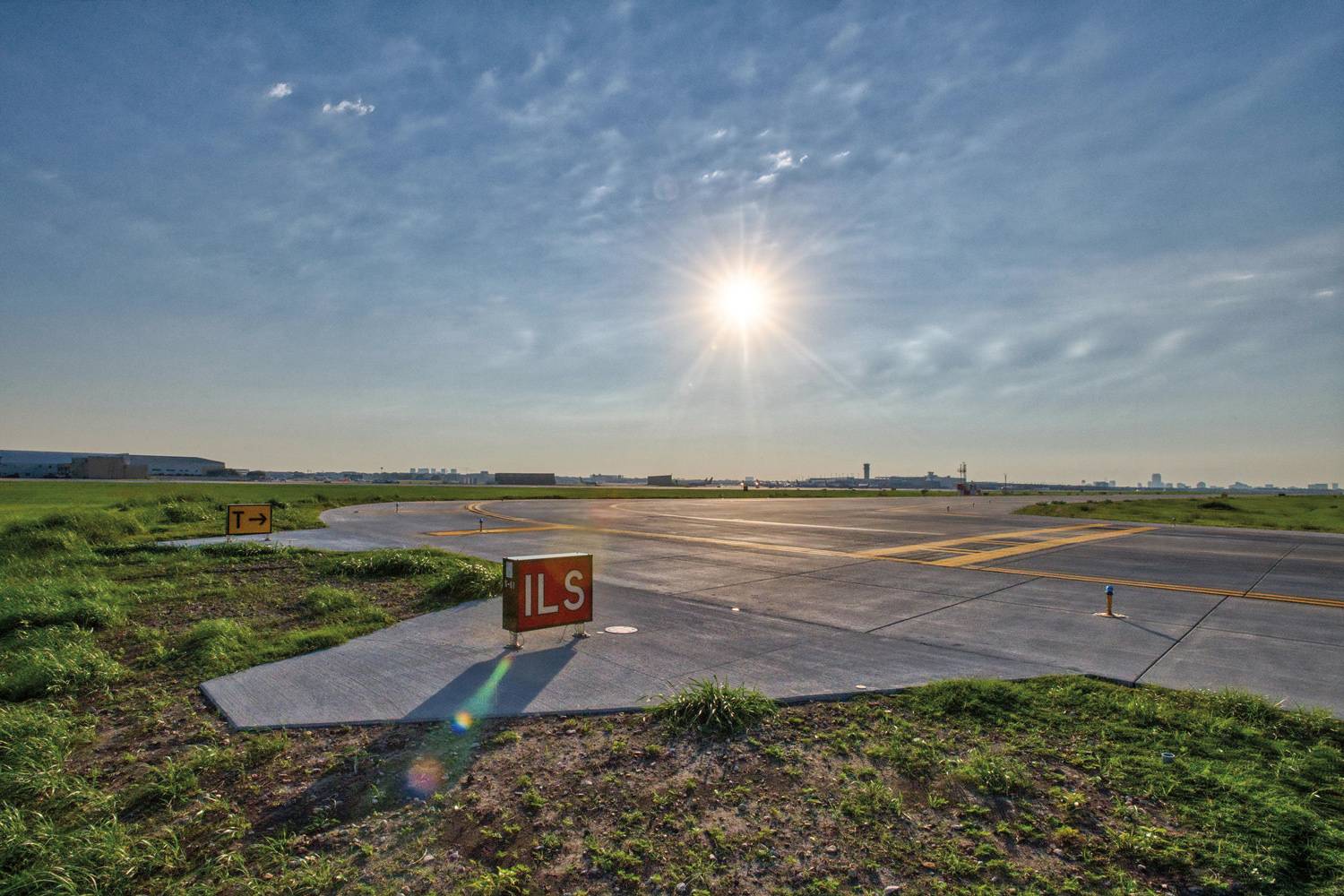
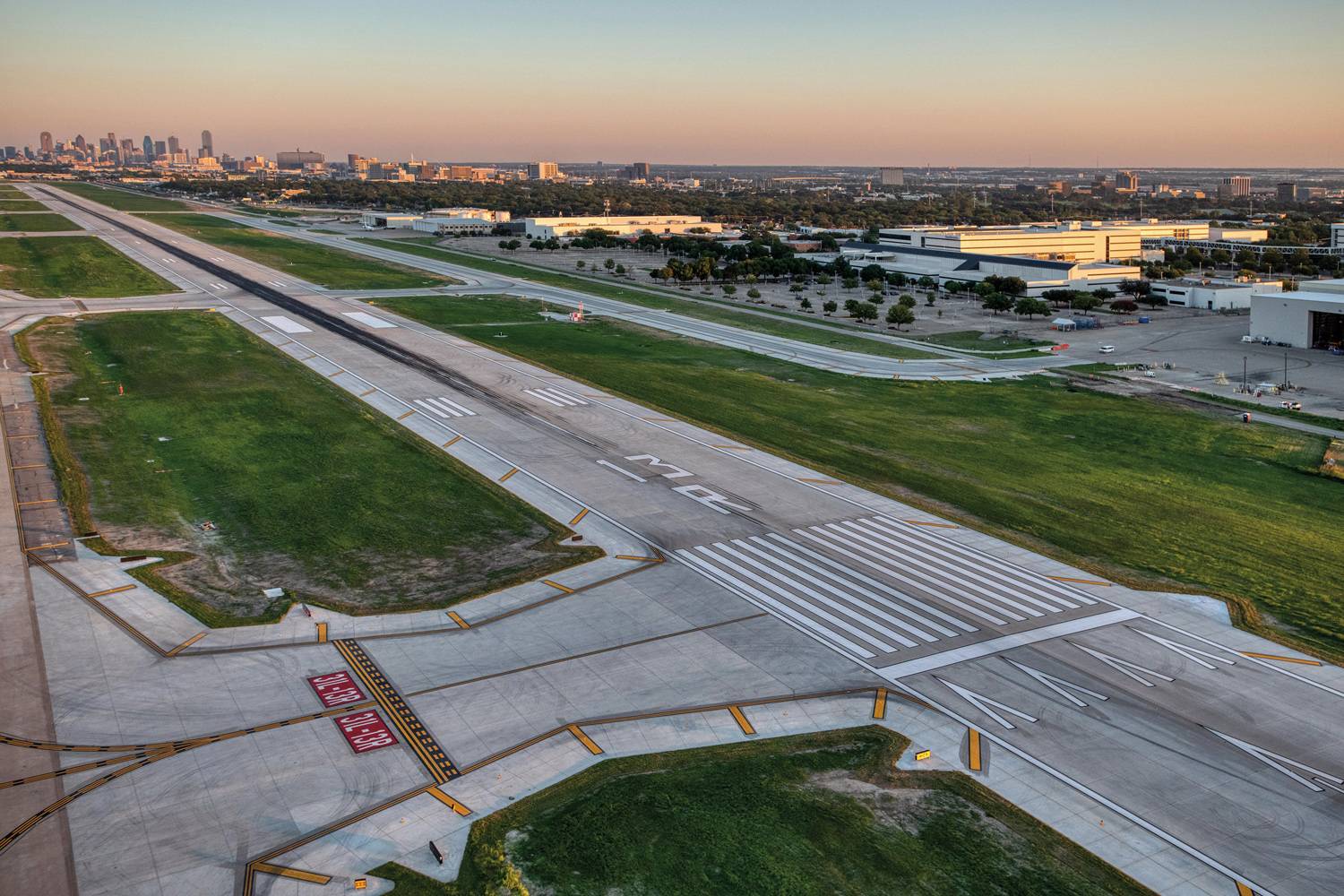
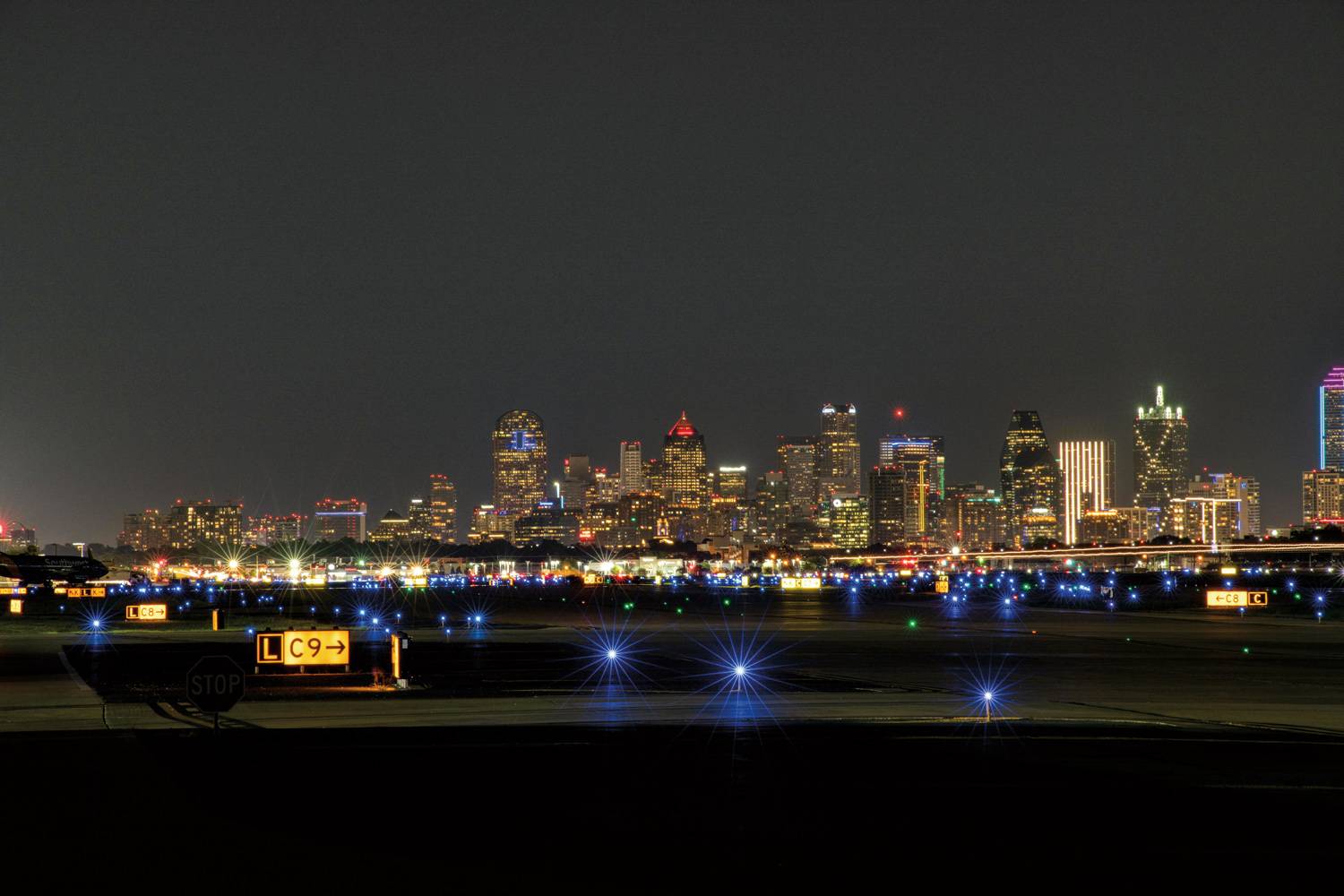
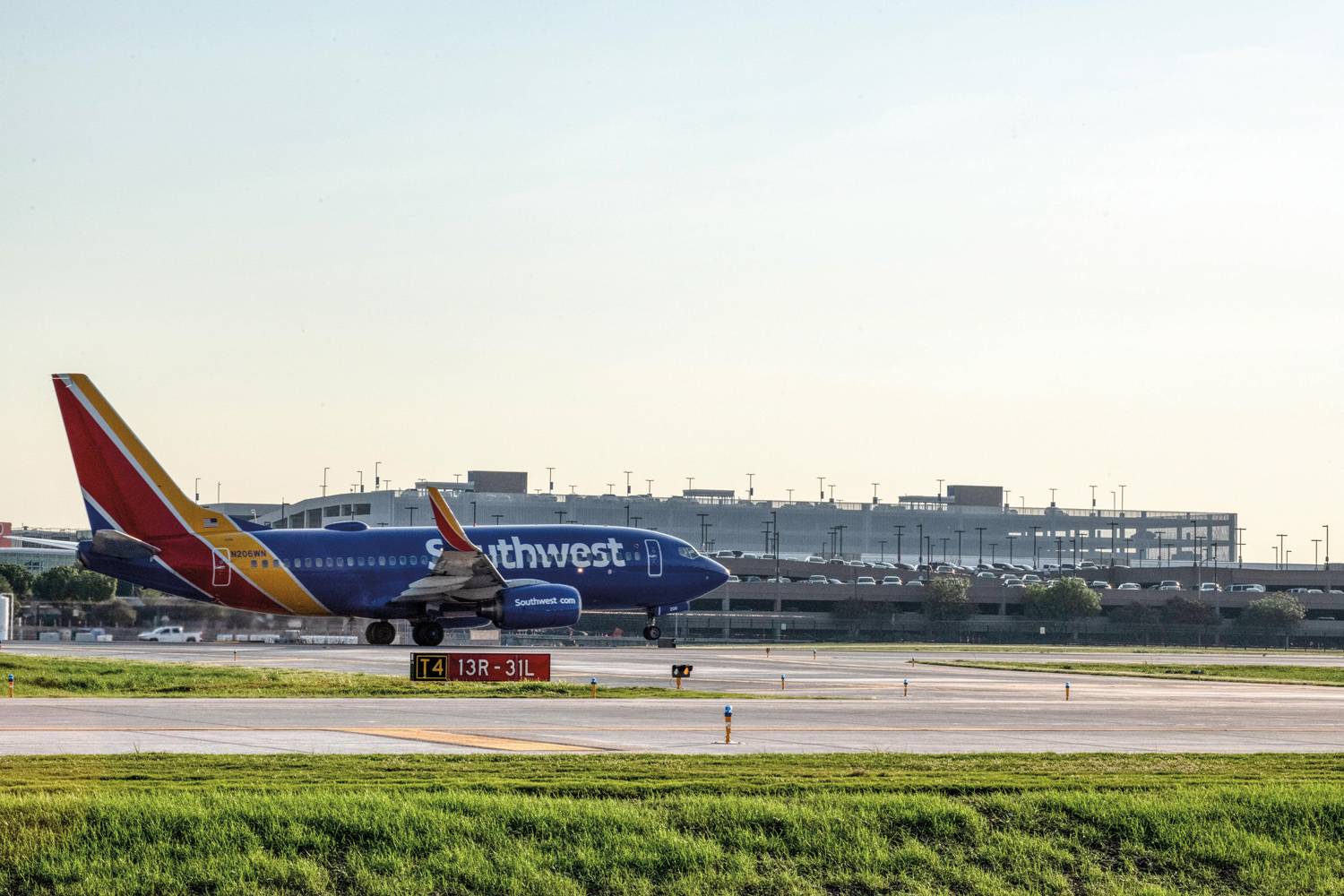
“Because reconstruction required runway closure for a period of time, we had a once-in-a-generation opportunity to develop a comprehensive plan that solved more than just the pavement issue.”
HNTB Project Manager
“The improvements made by the reconstruction allows Dallas Love Field to continue to service the high demand for commercial and private travel. With travel demands continuously increasing, this project ensures the longevity of uninterrupted travel here at Love Field.”
Dallas Love Field, Interim Assistant Director for Infrastructure and Development
Meeting environmental, sustainability and social goals
Consistent with the airport’s commitment to the environment and sustainability, construction practices aligned with the Institute for Sustainable Infrastructure’s Envision rating system criteria.
Approximately 92%, or 160,000 tons, of the aggregate base course was recycled from existing pavement, and the crushing process generated finer material that was used as pipe bedding on the project.
Demolished cement-treated base material was re-purposed as aggregate and used as temporary haul roads during construction, and 85% of the earthwork was utilized on site, reducing hauling efforts and associated costs and emissions. The project utilized solar-powered edge lights for temporary taxiway routes during construction. The new LED lights and signs installed on the runway and taxiways have resulted in a reduction of up to 70% in fixture load.
As part of the environmental assessment, the team conducted a noise analysis that identified potential impacts on nearby populations. To mitigate noise impacts and keep the public apprised of and engaged in the project, the team gathered feedback and provided updates through the Love Field Environmental Advisory Committee and the DAL Good Neighbor Program’s quarterly meetings held with communities surrounding the airport.
Mailers and flyers also were sent to affected communities notifying them of the temporary runway closure and construction timeline. Monthly internal stakeholder meetings kept tenants, fixed-base operators and airlines well-informed.
Overcoming challenges
The project encountered numerous challenges, including COVID-19, which delayed construction for about a year and then caused significant material cost increases, shortages and delivery delays. Fly ash and cement – critical to the concrete pavement specified for Runway 13R-31L – had severely limited availability, resulting in the team exploring options that included securing the materials from the neighboring states of Oklahoma and Arkansas and obtaining additional cement from Illinois. As construction began in March 2021, the project encountered 38 days of weather delays in the first four months of construction.
In its construction management role, HNTB placed knowledgeable staff on site to manage commercial services. Through a highly detailed approach, the City’s Aviation Department and HNTB’s construction management staff handled each of the challenges simultaneously, forthrightly addressing them early in the process to mitigate cost and schedule delays.
Although material price increases drove the final construction cost to 3.4% more than the original bid price, the total still came in under the original engineer’s estimated project budget. The runway reopened to aircraft traffic in June 2022, four months earlier than projected at the construction mid-point. Despite labor and material shortages, supply chain issues and numerous weather delays, the entire project was complete only two months behind schedule in October 2022.
Paving the runway to the future
Temporary taxiways, taxi lanes and vehicle service roads were implemented during the project to provide continuous access for stakeholders affected by the project. This approach helped DAL maintain operations and minimize travel delays while Runway 13R-31L was closed.
“The improvements made by the reconstruction allows Dallas Love Field to continue to service the high demand for commercial and private travel. With travel demands continuously increasing, this project ensures the longevity of uninterrupted travel here at Love Field,” said Vincent Lewis, Dallas Love Field, interim assistant director for infrastructure and development.
SEE MORE ARTICLES
MORE DESIGNER STORIES
Orlando International Airport Terminal C
Fish Passage
Denver International Airport A-West and B-West Concourses
CID Green Infrastructure Project
KC Levees Program
